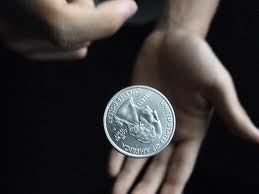By Leonard T. Grey
Introduction
Leading up to the remake of Casino Royale, the James Bond series was widely acknowledged to have devolved into a campy and predictable corporate product homogenized for mass public consumption. With a brand new actor at the helm, the filmmakers pushed forward with a concerted effort to reboot and redeem the series. Released in 2006, Casino Royale achieved both massive financial and critical success. Despite the wide acclaim, the film is still underrated by even it’s supporters. Not only is it one of the best espionage action films ever made, it’s one of the best films period.
Part 1. Black and White
The intro scene to Casino Royale is presented in black and white. This not only pays homage to older espionage films, but it also serves a thematic purpose. By closely examining Bond’s first two kill assignments, you’ll see that this black and white dualism is not only expressed literally, but figuratively as well, reflected through the camerawork, wardrobe, setting, lighting, sound, and virtually every other aspect of the film making process. To get a clearer understanding, you’ll need to have watched the extended version of the introduction, which features footage edited out of the theatrical cut.
Bond’s first kill mission takes place in the daytime during what appears to warm spring weather. A crowd watches a cricket game from a clubhouse.
The second takes place at nighttime during cold winter weather. The office building appears deserted.
Bond’s first target, Fisher, becomes aware of Bond’s presence and a chase ensues.
Dryden remains unaware of Bond’s presence and is walking into a well-calculated trap.
Bond and Fisher battle with their fists up close, tearing apart a brightly lit bathroom.
Bond and Dryden battle with their wits from a distance, across a darkly lit office.
Bond’s first kill is up close and difficult. Emotions are clearly heated.
The second kill is much easier. Bond remains cold and distant.
As Dryden is shot, he knocks over his family photo. Just like Dryden’s safe and handgun, Bond has also examined the photo prior to Dryden’s arrival.
Black and white, day and night, hot and cold, clean and messy. There is clearly a deliberate pattern of dualism between the two scenes. Can you guess why the writers named them Dryden and Fisher?
So now that you see the inherent dualism throughout the introduction, let me explain why it’s there. Dualism is a very prominent theme in Freemasony(the film displays masonic symbols and concepts throughout) and is conveyed by the black and white checkerboard floor of the house, which represents base consciousness. The Masonic initiate’s goal is to receive the light by raising their consciousness and thus see the game board from a higher vantage point. Many who enter secret societies tend to view the world from a higher perspective due to the knowledge and experience that they subsequently gain. In that respect, M16 is very much a secret society as well and the entire introduction is about Bond’s initiation into an occult order.
The black and white checkerboard floor of the house representing low awareness.
The MIV logo features the all-seeing eye which represents higher consciousness.
To become initiated, Bond has to obtain double O status. The ‘00’ in 007 very clearly refers to the eyes, because in espionage, as well as in movies, it’s all about awareness and perspective. And by becoming a double ‘00’ agent, Bond is symbolically opening his eyes. The film illustrates this perfectly.
From the POV of a gun-barrel (which looks like the iris of an eye), Bond completes his first kill and color is finally introduced to the film through blood.

The screen then proceeds to fill with psychedelic imagery. By becoming a killer, Bond is now viewing his world through a new perspective.
Bond has obtained ‘00’ status and his eyes have been opened to the dangerous game of espionage.































































